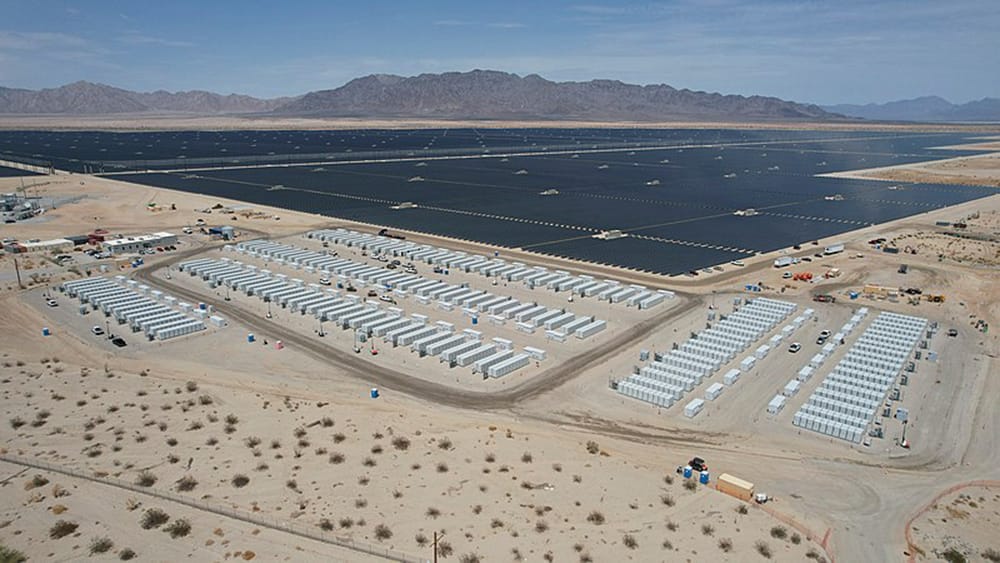Back when he was still fightin’ around the world instead of, apparently, slouching around the bain marie at The Coffs Hotel, Russell Crowe grabbed some typical headlines when he threw a celeb tanty while slumming a coach-class Virgin flight. The reason? The cabin crew refused to allow him to take his kids’ Segway boards, aka ‘hoverboards’, on the plane.
With good reason. The briefly faddish toys relied on a large lithium-ion battery for power. As countless Tesla and e-scooter riders have found out, these batteries are a ticking firebomb. They’re near impossible for firefighters to put out. There are already 10,000-12,000 battery fires in Australia alone.
What happens, as climate-deranged governments and corporations build more and more of their much-touted ‘big batteries’? You guessed it: the bigger the battery, the bigger the fire.
America faces a growing threat from grid scale lithium battery fires. Construction of huge battery arrays with no concern for potentially catastrophic fires is out of control.
‘Out of control’ in more ways than one. When a big battery installation caught fire during testing in the Australian town of Geelong, firefighters had no choice but to leave it to burn itself out over the weekend.
Imagine such a scenario repeated at an even bigger array, such as the Desert Sunlight facility in California.

This is a medium sized storage facility.
Note how closely the battery units are crammed together, increasing the risk of a single fire spreading throughout the whole facility.
To try and conceive the peril of big battery fires, scale up something like an electric truck fire.
A battery powered tractor trailer rig recently crashed and it’s battery burned on an interstate in California. Lithium battery fires cannot be put out so this one burned for around eleven hours.
In order to keep the fire from spreading to create a wildfire the fire crew continuously sprayed it using a reported 50,000 gallons of water in the process. The interstate was closed due to the toxic fumes from the fire.
That’s just a relatively titchy battery.
One of these grid scale battery units is easily 10 to 20 times the size of that truck battery. If the water usage required to keep a grid battery fire from spreading scales with size that is 500,000 to a million gallons of water.
Now, consider a big battery, not in the California desert but in a forested or a residential area. Apart from the toxic smoke, and millions of litres of water laced with toxic chemicals, smothering the area, there’s the obvious danger of an intense fire that cannot be put out spreading.
The actual amount is an engineering calculation that needs to be established and incorporated into battery facility design standards […] the whole facility could go up with a hundred or more giant batteries burning. That would be truly catastrophic.
Another facility, the ludicrously-named ‘Horse Heaven Wind Farm’ in Washington state, is surrounded by rolling grasslands (the sort of landscape which never catches fire).
It is a combined wind, solar and battery project with a proposed storage capacity of 300 MW, which is considerably bigger than Desert Sunlight.
It might have 200 huge lithium battery units. That number is not disclosed […]
The permitting authority is the Washington Energy Facility Site Evaluation Council or EFSEC for short. The permit is called a Site Certification Agreement or CSA and Horse Heaven just got one, with a big push from the Governor.
The astounding point is that there was no discussion, or even recognition, of the fire threat posed by this enormous lithium battery facility. The CSA has numerous requirements for lots of issues, big and small, right down to the facility having water to keep the road dust down.
There is nothing on having a million or so gallons to prevent a catastrophic conflagration, nor on the environmental impact of such.
Surely the application must have had to consider fire risk?
The App is over 500 pages long and I can find just one sentence about battery fires. Buried in a long paragraph on PDF page 366 we read “Lithium-ion battery storage may pose a risk of fire and explosion due to the tendency for lithium-ion batteries to overheat.”
Which is probably the first time the climatards could ever be accused of understatement.









